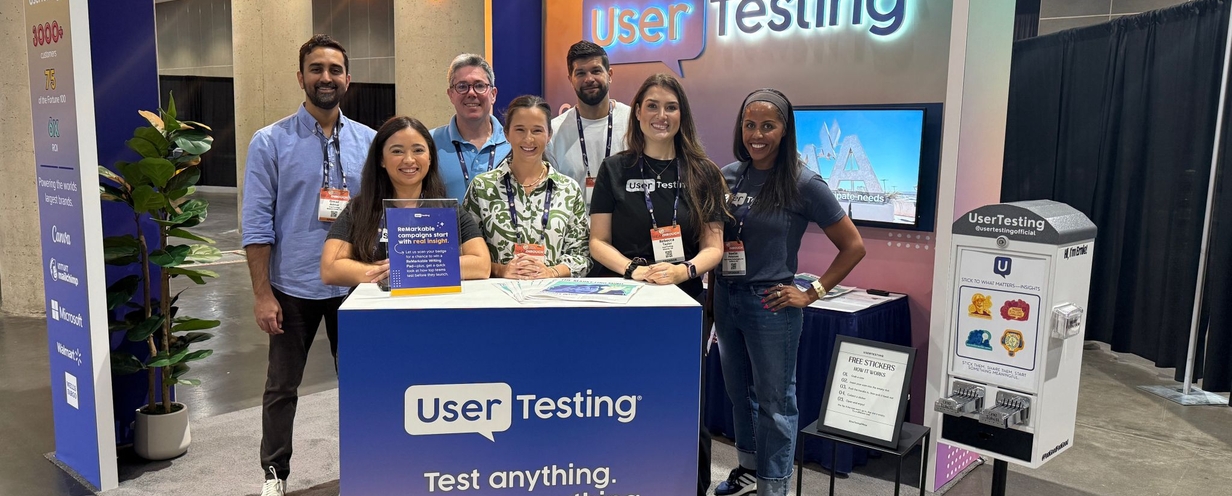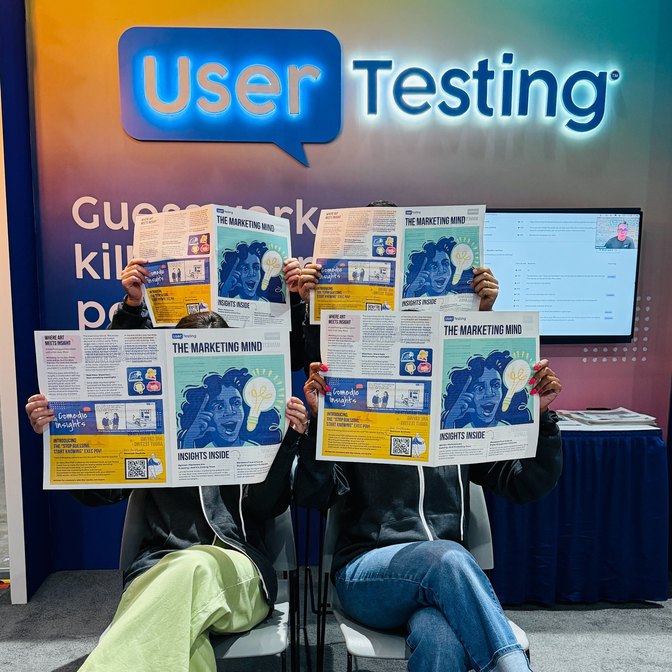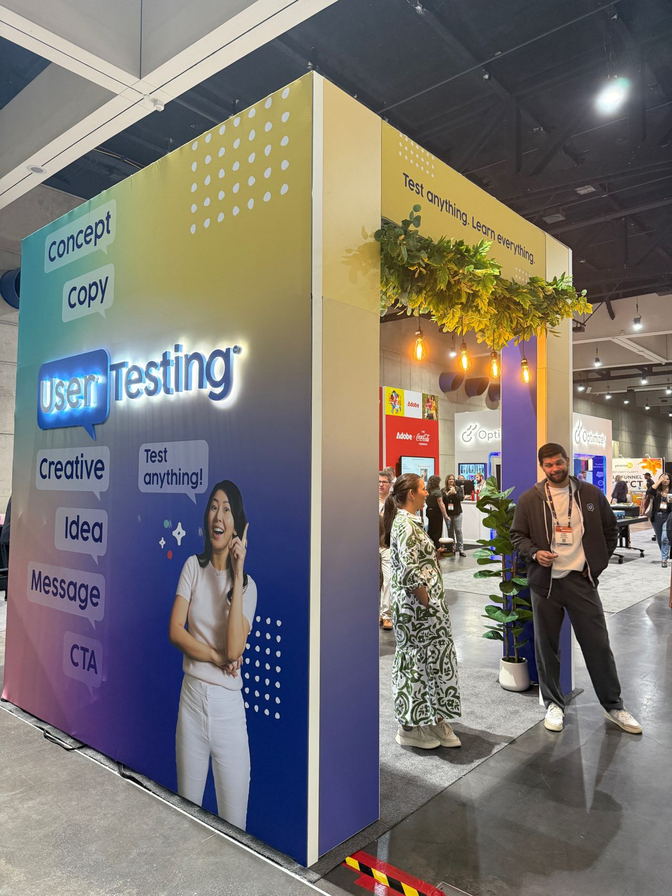
Stop guessing, start knowing: Lessons from Content Marketing

Walking into Content Marketing World this year, I expected wall-to-wall conversations about AI. Instead, I heard marketers doubling down on the basics, rethinking formats, and quietly wrestling with how to balance speed with substance.
The team at UserTesting recently had the privilege of attending Content Marketing World as both a sponsor and a presenter. My session “Stop Guessing, Start Knowing” focused on why marketers need to test their messaging, creative, and campaigns before they launch. Too often, we’re making million-dollar bets based on gut feel. Testing first takes the guesswork out of marketing.
But beyond my own talk, the conversations and sessions at the event revealed some fascinating shifts in the industry. Here are four observations, and what they mean for marketing leaders today.
LEADERSHIP SIGNALS
Stop Guessing, Start Knowing
How marketers can use fast feedback to break through to audiences on oversaturated channels
1. AI wasn’t the star of the show
Are we finally starting to feel AI fatigue? Despite the LinkedIn headlines, AI wasn’t the dominant topic in most sessions. Instead, the most heavily attended sessions were giving content marketers new, better ways to break through the noise. Speakers leaned into the fundamentals: strategy, content formats, and how to capture attention in a crowded market.
It’s a sign that scaling content (the primary use case for AI) isn’t quite the goal anymore, the focus really is on producing words and images that people will actually click on.
2. When AI did come up, it was mostly about reducing workload
The few conversations we heard about AI were mostly focused on making life easier for the content team. We saw some good sessions on how to get multiple AI agents to sync and reduce the workload for content ideation, drafting and review.
Faster content production, review automation, and efficiency gains are key benefits for any marketing team, but I got the feeling that people were really looking for ways that AI could elevate their creativity, (or free up time for them to be more creative on their own).
3. Video and visuals are taking over
Every marketer we met, whether they worked in healthcare, chemical manufacturing, private plane leasing or software was investing in visual content. The conversations were less about getting ranked in ChatGPT, and more about how to quickly produce engaging videos and images for social. Attention is increasingly won through visual storytelling, not long-form text alone.
The 500-800 word blog post on the company website seemed to be a relic of the past. While it’s still a workhorse, it definitely isn’t the primary content asset it used to be, as more marketers are trying to meet and engage audiences where they’re at. Today, that’s increasingly on social platforms that reward videos above all else.

4. The best vendors are selling impact, not just efficiency
On the expo floor, most “AI-powered” solutions promised speed—faster publishing, easier approvals, more automation. Few were focused on helping marketers actually create more resonant or differentiated work. The ones that really stood out were the ones where the impact was obvious and immediate. For example, we saw a translation service where the AI worked quite magically, not just translating static text but real-time voices in the middle of a webinar.
Key takeaways
What Content Marketing World made clear is this: marketers aren’t chasing shiny objects anymore (maybe they never were?), they’re chasing breakthroughs. AI, video, workflows, formats… they’re all tools that will get our content to the market faster. But the real differentiator is knowing, with confidence, what’s going to resonate before you hit publish.

That’s the shift we’re seeing: from producing more content to producing the right content. Testing messaging, experimenting with formats, and validating creative ideas ahead of launch isn’t just risk management—it’s how modern marketing teams break through.
ON_DEMAND WEBINAR





